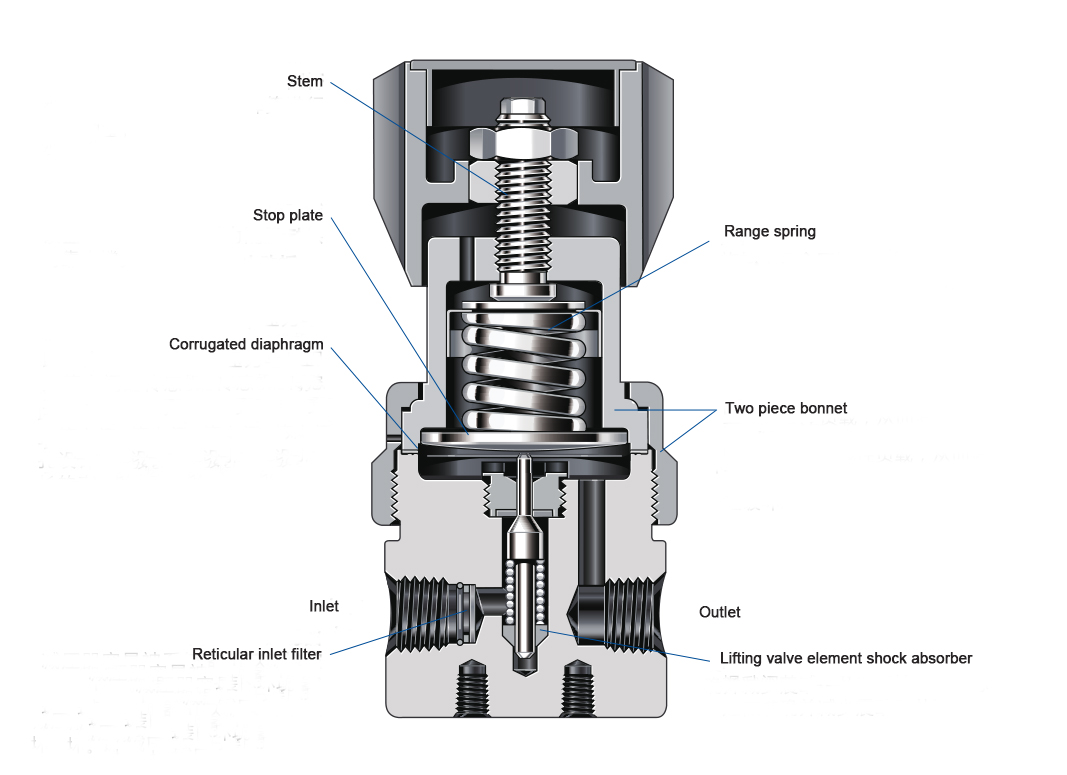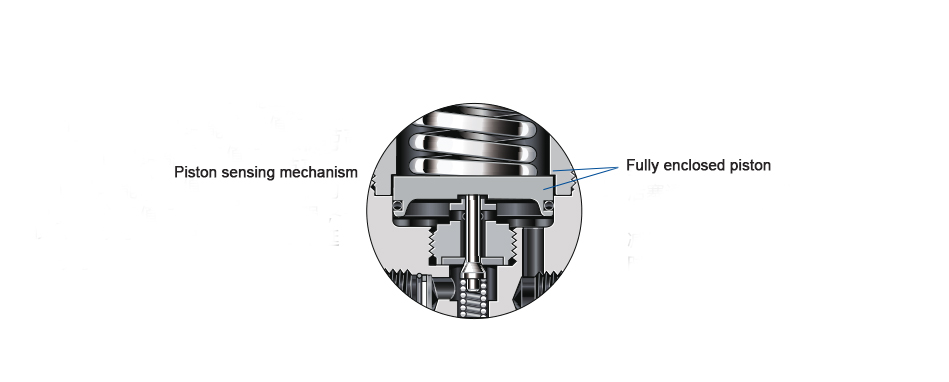Structural characteristics of pressure reducer
Pay attention to the following factors when selecting the pressure regulator.
According to the requirements of your specific use, use this catalog to select
the pressure regulator with your parameters. If you have special request, we can
modify or design the control equipment to solve any problems in the
application.

Stem: fine thread can adjust the accuracy of low torque spring.
Brake plate: the disc provides reliable support for the diaphragm in case of overpressure.
Corrugated diaphragm: This all metal diaphragm is a sensing mechanism between the inlet pressure and the measuring range spring. The corrugated non perforated design ensures higher sensitivity and longer service life. The piston sensing mechanism can withstand higher pressure.
Range spring: rotating the handle will compress the spring, lift the valve core off the valve seat and increase the outlet pressure
Two piece bonnet: two-piece design enables the diaphragm seal to bear linear load when pressing the bonnet ring, thus eliminating torque damage to the diaphragm during assembly
Inlet: mesh inlet filter and pressure reducer are easy to be damaged by particles in the system. The AFKLOK pressure reducer contains a 25 μ M. The snap ring mounted filter can be removed to allow the pressure reducer to be used in a liquid environment.
Outlet: lift valve core shock absorber, which can maintain accurate positioning of lift valve core and reduce vibration and resonance.

Piston sensing mechanism: piston sensing mechanism is generally used to adjust the pressure that the high-pressure diaphragm can withstand. This mechanism has a strong resistance to the damage of pressure peak value, and its stroke is short, so its service life is prolonged to the greatest extent
Fully enclosed piston: the piston is enclosed in the bonnet through a shoulder structure to prevent the piston from rushing out when the outlet pressure of the pressure regulator is too high.
 EN
EN
 AR
AR
 HR
HR
 CS
CS
 NL
NL
 FR
FR
 DE
DE
 IT
IT
 JA
JA
 KO
KO
 NO
NO
 PL
PL
 PT
PT
 RO
RO
 RU
RU
 ES
ES
 SV
SV
 TL
TL
 ID
ID
 VI
VI
 MT
MT
 TH
TH
 TR
TR
 AF
AF
 MS
MS
 AZ
AZ

